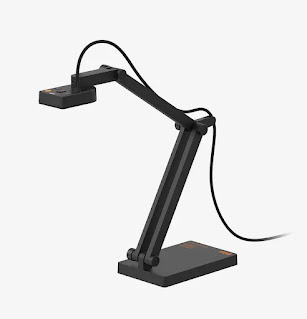Blog Post #2: The Intersection of Information, Digital, and Technology Literacies

Image retrieved from Binus University International School of Computing and Creative Arts.
As shown in the framework created by the Partnership for 21st Century Learning (P21), information literacy, technology literacy, and digital/media literacy are a major part of 21st century skills. In order for learners to, "...graduate better prepared to thrive in today's global economy.," mastery of the 21st century skills is quintessential (2015, pp.1). While this was something that I am already keenly aware of as a teacher, it is also important to support the development of those skills in the role of a school librarian.
The definitions provided by the P21 framework gave a clear breakdown of information, media, and technology literacies. Information literacy encompasses accessing, evaluating, using, and managing information (2015, pp.5). Media literacy intersects this as it requires a user to effectively analyze and create media - which subsequently requires well-developed information literacy skills (2015, pp.5). Both of these also intersect with technology literacy as a majority of the information created and accessible today is digital and, thus, necessitates a strong understanding of technology and, "...the ethical/legal issues surrounding [its] access and use..." (2015, pp.6).
While the 21st century skills framework emphasizes the importance of strengthening these literacy skills for education and career purposes, The Liturgists Podcast episode on fake news explains how harmful deficits in these skills can be. Their discussion on the harm caused by conspiracy theories created surrounding the Sandy Hook shooting is only one of the many examples of the devastation that can be caused from a mixture of fake news and information, digital, and technology literacies (Gungor, 2017, 3:58). In the Fake News & Media Literacy episode, it was also made clear that a separation needs to be found between misinformation and disinformation, and also between true news sources and sources discussing news with a known bias before something is declared as fake news (Gungor, 2017, 15:45).
The podcast hosts also stated about media literacy, "The fact that it's not fake news...doesn't mean you abandon skepticism.," because every source should be evaluated for validity and reliability (Gungor, 2017, 34:50). In an article published by the School Library Journal, the author emphasized that, "It is up to the reader or viewer to negotiate truth." (Valenza, 2016). This discernment comes from a strong development of information literacy, digital literacy, and technology literacy. As the digital age continues, the importance of the intersection of these literacies becomes increasingly apparent.
As an English Language Arts teacher, it is currently my responsibility to teach middle school students how to evaluate information sources in print and digital contexts. Therefore, I set the example for my students by practicing those literacy skills in my own information diet. When interacting with information in a professional context, I am constantly evaluating the sources they come from and "fact-checking" behind myself. The same, and more, should be expected of a school librarian who is to be regarded as an information professional. When assisting others in the school environment, and in personal interactions with information, librarians should be acutely confident in the validity, credibility, and reliability of sources.
References
Ferawati, L. E. (2020). Media Literacy and Digital Literacy: The required skills in the Digital age. Creative Digital Communication. https://international.binus.ac.id/communications/2020/12/19/media-literacy-and-digital-literacy-the-required-skills-in-the-digital-age/
Gungor, M. (Executive Producer). (2017). Fake news & media literacy (No. 55) [Audio Podcast Episode]. In The Liturgists Podcast. The Liturgists Inc. https://podcasts.apple.com/us/podcast/fake-news-media-literacy/id903433534?i=1000382332635
Partnership for 21st Century Learning. (2015). Framework for 21st Century Learning. Washington.
Partnership for 21st Century Learning. (2015). P21 Framework Definitions. Washington.
Valenza, J. (2016). Truth, truthiness, triangulation: A news literacy toolkit for a “post-truth” world. Neverending Search. https://blogs.slj.com/neverendingsearch/2016/11/26/truth-truthiness-triangulation-and-the-librarian-way-a-news-literacy-toolkit-for-a-post-truth-world/


Hi Hannah! It sounds like you are a great role model for your students in evaluating sources! I like your point about retaining skepticism even when reading a reputable and trustworthy source. Even if the content of a piece of media is true, it could still be written in a way to make a person feel a certain emotion, or the author could have made a mistake about a detail. Being able to discern that is crucial in today's media landscape.
ReplyDeleteHey Hannah. Thank you for this thoughtful post. I appreciate how you connected the P21 framework and The Liturgists Podcast to real-world consequences of poor media literacy. Your emphasis on modeling strong evaluation habits is so important. Especially as both teachers and librarians, you are trusted guides in navigating information. I agree that school librarians must hold themselves to the highest standard of credibility and critical thinking.
ReplyDelete